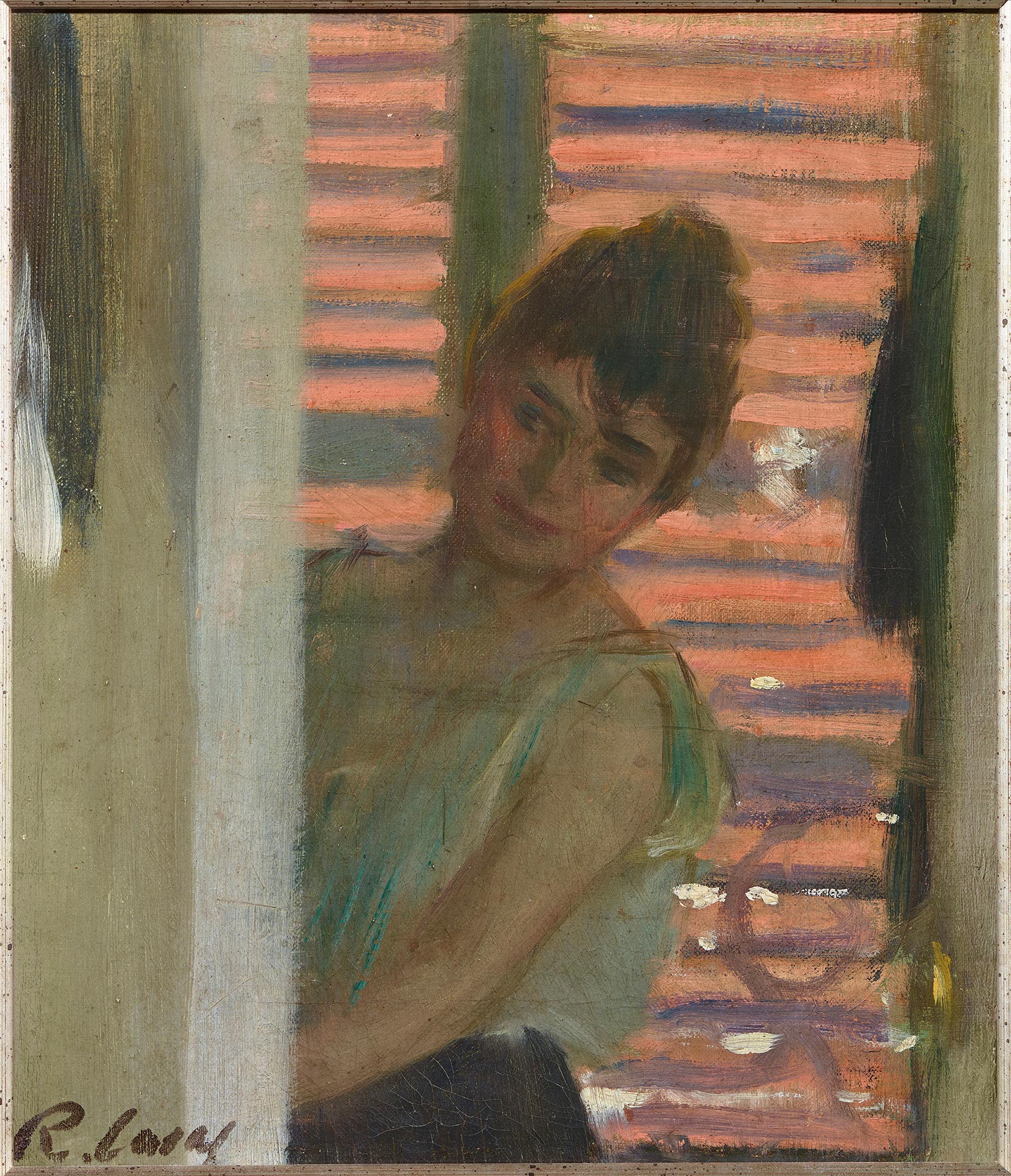
Ramón Casas (Barcelona, 1866-1932)
Woman against a Blind
circa 1890
WORK INFORMATION
Oil on canvas, 24.3 x 20.3 cm
OTHER INFORMATION
Signed in the lower left-hand corner: "R. Casas"
Ramón Casas was born into a well-to-do family in Barcelona. His early inclination towards art met with no opposition from his father, an adventurer who had made his fortune in colonial Cuba. While still very young, he became a favourite student of the Barcelona painter and decorator Joan Vicens and forged ties with the budding group of intellectuals who would later run the journal L'Avenç, where his first drawing was published in 1881. That same year he moved to Paris, where he studied under the prestigious academic portraitist Carolus-Durand and discovered the fledgling French Impressionist school.
Carolus-Durand's influence is obvious in Casas's 1888 portrait of his older sister Montserrat, a large vertical female portrait, though the looser brushwork already seems to hint at a tendency towards Impressionism that would not be openly asserted in his painting for at least few more years. This piece was probably painted during a brief stint in Barcelona, sometime between an inconsequential trip to Paris in the summer of 1887 and a picturesque tour of Catalonia by cart taken with Santiago Rusiñol in 1889. One year later Casas and Rusiñol were reunited at the Moulin de la Galette in Paris, where they embarked on a series of collaborations and the finest pictorial period in both their careers.
It was while sharing lodgings with Rusiñol in Montmartre that Casas painted this small piece, Woman against a Blind, remarkable for its "photographic" conception and the preference for blurred, schematic lines, heavily influenced by Degas and Whistler, that earned him the censure of the conservative critics of the day.
Despite their detractors, the exhibition of Casas and Rusiñol's works at the General Fine Arts Exhibition held at Barcelona's Sala Parés in 1891 had tremendous impact, marking the grand debut of pictorial modernism in Catalonia and confirming them as leaders of the modern school. Their extraordinary charcoal portraits, posters and murals soon came to the attention of the international art world.
This period of great successes and intense participation in discussions at Els Quatre Gats—the brewery where all the leading modern and postmodern intellectuals gathered between 1897 and 1903—produced a second portrait of Ramón's sister Montserrat. This is the most important work of his mature period, no doubt made shortly before his brief sojourn in Madrid (1904) where, having become a much sought-after portraitist, he painted Alfonso XIII. [Francesc Fontbona]

